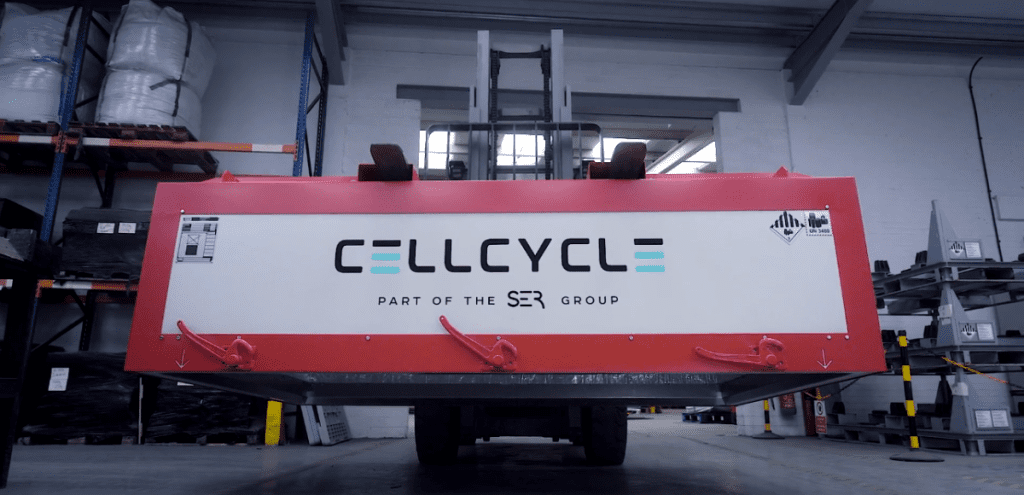In today’s sustainability-driven corporate landscape, two key practices stand out: reuse and repurpose. Both are central to achieving a circular economy, particularly in the battery recycling industry, where resources are precious and finite. Understanding the nuances between these concepts is essential for businesses aiming to integrate sustainability into their core strategies, particularly those in industries reliant on energy storage technologies.
Reuse: Extending the Life of Batteries
Reuse in the context of battery recycling refers to the process of refurbishing or repairing batteries to use them again for their original purpose. In the electric vehicle (EV) sector, for instance, reuse involves taking a battery that has reached the end of its initial lifecycle in an EV, refurbishing it, and then using it in another EV.
This strategy is highly beneficial in terms of sustainability and cost-efficiency. For businesses, reusing batteries in their original capacity avoids the need to manufacture new units, reducing both production costs and the environmental impact of mining for new raw materials like lithium and cobalt. EV manufacturers or fleet managers often find this particularly appealing, as refurbishing batteries can provide a cost-effective solution to extend vehicle life without requiring expensive new components.
Repurpose: New Life for Used Batteries
Repurposing involves taking a battery that can no longer meet the high-performance standards required in an EV and adapting it for a different, less demanding use. A prime example of this in the battery industry is stationary energy storage. EV batteries, once they’ve degraded to a point where they no longer deliver sufficient range or power for a vehicle, can be repurposed for use in stationary energy storage systems.
In this context, repurposing enables these batteries to power homes, businesses, or renewable energy storage applications like solar or wind power. These applications are less demanding in terms of energy output compared to the requirements of an electric vehicle, making repurposing a smart way to extend the utility of the battery while supporting renewable energy goals. This not only reduces waste but also delays the need for the materials to be fully recycled.
The Corporate Advantage: When to Reuse and When to Repurpose
For businesses involved in battery technology, the decision to reuse or repurpose batteries depends on a combination of factors such as cost-effectiveness, battery health, and the specific sustainability goals of the company.
Reuse is often the preferred option when batteries still have sufficient capacity to perform their original function after refurbishment. Companies operating large EV fleets, for example, may choose to refurbish and reuse batteries across their fleet to maximise return on investment while maintaining operational efficiency.
Repurpose, however, becomes valuable when batteries are no longer viable for their original application but still have enough capacity for less energy-intensive roles. This strategy is particularly relevant for industries looking to develop grid storage solutions to balance intermittent renewable energy sources, such as solar or wind farms. Repurposing EV batteries for grid energy storage creates an entirely new value stream from batteries that would otherwise be discarded.
Sustainability and Profitability: The Dual Benefits
Both reuse and repurpose strategies offer clear environmental and economic benefits. For companies in the battery recycling field, these practices provide pathways to reduce waste disposal costs, minimise the need for new raw materials, and create secondary markets for repurposed batteries. Reusing and repurposing also help companies meet increasingly stringent environmental regulations while capturing additional value from existing resources.
Reuse enables cost savings by extending the life of batteries in their original role, while repurpose opens new revenue streams by adapting batteries for different, less demanding applications. Both approaches play a crucial role in fostering a circular economy in industries where resources like lithium, nickel, and cobalt are critical to operations.
Conclusion
In the battery recycling industry, the distinction between reuse and repurpose is more than just technical terminology—it represents strategic decisions that can have profound economic and environmental implications. By understanding when to reuse and when to repurpose, companies can enhance their sustainability efforts, improve resource efficiency, and stay competitive in an increasingly eco-conscious market. Whether extending the life of EV batteries through reuse or giving them a new purpose in stationary energy storage systems, businesses have a unique opportunity to lead in the circular economy while maximising profitability.
A prime example of this approach can be seen in CellCycle’s strategic partnership with Teshub Energy. This partnership focuses on advancing lithium battery reuse and second-life solutions, aligning perfectly with the principles discussed above. Together, both companies aim to extend the lifecycle of batteries, helping reduce waste and support the growth of sustainable energy solutions. You can read more about this exciting partnership and its impact on the battery industry here.


